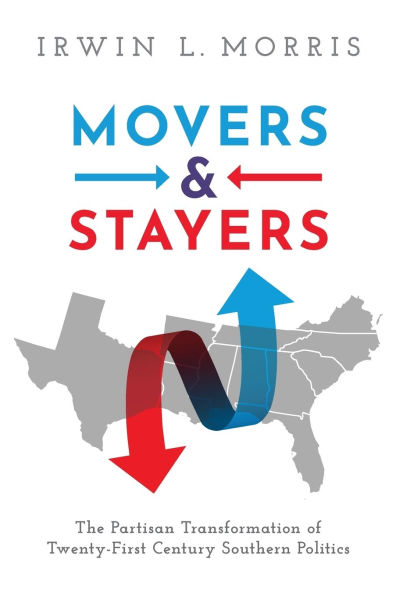Home
Military Transformation Past and Present: Historic Lessons for the 21st Century
Barnes and Noble
Loading Inventory...
Military Transformation Past and Present: Historic Lessons for the 21st Century in Chattanooga, TN
Current price: $78.00

Barnes and Noble
Military Transformation Past and Present: Historic Lessons for the 21st Century in Chattanooga, TN
Current price: $78.00
Loading Inventory...
Size: Hardcover
Transformation has become a buzz word in today's military, but what are its historical precursors—those large scale changes that were once called Revolutions in Military Affairs (RMA)? Who has gotten it right, and who has not? The Department of Defense must learn from history. Most studies of innovation focus on the actions, choices, and problems faced by individuals in a particular organization. Few place these individuals and organizations within the complex context where they operate. Yet, it is this very context that is a powerful determinant of how actions are conceived, examined, and implemented, and of how errors are identified and corrected.
The historical cases that Mandeles examines reveal how different military services organized to learn, accumulate, and retrieve knowledge; and how their particular organization affected everything from the equipment they acquired to the quality of doctrine and concepts used in combat. In cases where more than one community of experts was responsible for weighing in on decisionmaking, the service benefited from enhanced application of evidence, sound inference, and logic. These cases demonstrate that, for senior leadership, participating in such a system should be a strategic and deliberate choice. In each of the cases featured in this book, no such deliberate choice was made. The interwar U.S. Navy (USN) aviation community and the U.S. Marine Corps amphibious operation community were lucky that, in a time of rapid technological advance and strategic risk, their decisions in framing and solving technological and operational problems were made within a functioning multi-organizational system. The Army Air Corps and the Royal Marines were unfortunate, with corresponding results. It is characteristic of 20th-century military history that no senior civilian or military leader suggested a policy to handle overlapping responsibilities by multiple departments. Today's policymakers have not learned this lesson. In the present time, while a great deal of thought is devoted to proper organizational design and the numbers of persons required to perform necessary functions, there is still no overarching framework guiding these designs.
The historical cases that Mandeles examines reveal how different military services organized to learn, accumulate, and retrieve knowledge; and how their particular organization affected everything from the equipment they acquired to the quality of doctrine and concepts used in combat. In cases where more than one community of experts was responsible for weighing in on decisionmaking, the service benefited from enhanced application of evidence, sound inference, and logic. These cases demonstrate that, for senior leadership, participating in such a system should be a strategic and deliberate choice. In each of the cases featured in this book, no such deliberate choice was made. The interwar U.S. Navy (USN) aviation community and the U.S. Marine Corps amphibious operation community were lucky that, in a time of rapid technological advance and strategic risk, their decisions in framing and solving technological and operational problems were made within a functioning multi-organizational system. The Army Air Corps and the Royal Marines were unfortunate, with corresponding results. It is characteristic of 20th-century military history that no senior civilian or military leader suggested a policy to handle overlapping responsibilities by multiple departments. Today's policymakers have not learned this lesson. In the present time, while a great deal of thought is devoted to proper organizational design and the numbers of persons required to perform necessary functions, there is still no overarching framework guiding these designs.
Transformation has become a buzz word in today's military, but what are its historical precursors—those large scale changes that were once called Revolutions in Military Affairs (RMA)? Who has gotten it right, and who has not? The Department of Defense must learn from history. Most studies of innovation focus on the actions, choices, and problems faced by individuals in a particular organization. Few place these individuals and organizations within the complex context where they operate. Yet, it is this very context that is a powerful determinant of how actions are conceived, examined, and implemented, and of how errors are identified and corrected.
The historical cases that Mandeles examines reveal how different military services organized to learn, accumulate, and retrieve knowledge; and how their particular organization affected everything from the equipment they acquired to the quality of doctrine and concepts used in combat. In cases where more than one community of experts was responsible for weighing in on decisionmaking, the service benefited from enhanced application of evidence, sound inference, and logic. These cases demonstrate that, for senior leadership, participating in such a system should be a strategic and deliberate choice. In each of the cases featured in this book, no such deliberate choice was made. The interwar U.S. Navy (USN) aviation community and the U.S. Marine Corps amphibious operation community were lucky that, in a time of rapid technological advance and strategic risk, their decisions in framing and solving technological and operational problems were made within a functioning multi-organizational system. The Army Air Corps and the Royal Marines were unfortunate, with corresponding results. It is characteristic of 20th-century military history that no senior civilian or military leader suggested a policy to handle overlapping responsibilities by multiple departments. Today's policymakers have not learned this lesson. In the present time, while a great deal of thought is devoted to proper organizational design and the numbers of persons required to perform necessary functions, there is still no overarching framework guiding these designs.
The historical cases that Mandeles examines reveal how different military services organized to learn, accumulate, and retrieve knowledge; and how their particular organization affected everything from the equipment they acquired to the quality of doctrine and concepts used in combat. In cases where more than one community of experts was responsible for weighing in on decisionmaking, the service benefited from enhanced application of evidence, sound inference, and logic. These cases demonstrate that, for senior leadership, participating in such a system should be a strategic and deliberate choice. In each of the cases featured in this book, no such deliberate choice was made. The interwar U.S. Navy (USN) aviation community and the U.S. Marine Corps amphibious operation community were lucky that, in a time of rapid technological advance and strategic risk, their decisions in framing and solving technological and operational problems were made within a functioning multi-organizational system. The Army Air Corps and the Royal Marines were unfortunate, with corresponding results. It is characteristic of 20th-century military history that no senior civilian or military leader suggested a policy to handle overlapping responsibilities by multiple departments. Today's policymakers have not learned this lesson. In the present time, while a great deal of thought is devoted to proper organizational design and the numbers of persons required to perform necessary functions, there is still no overarching framework guiding these designs.

















